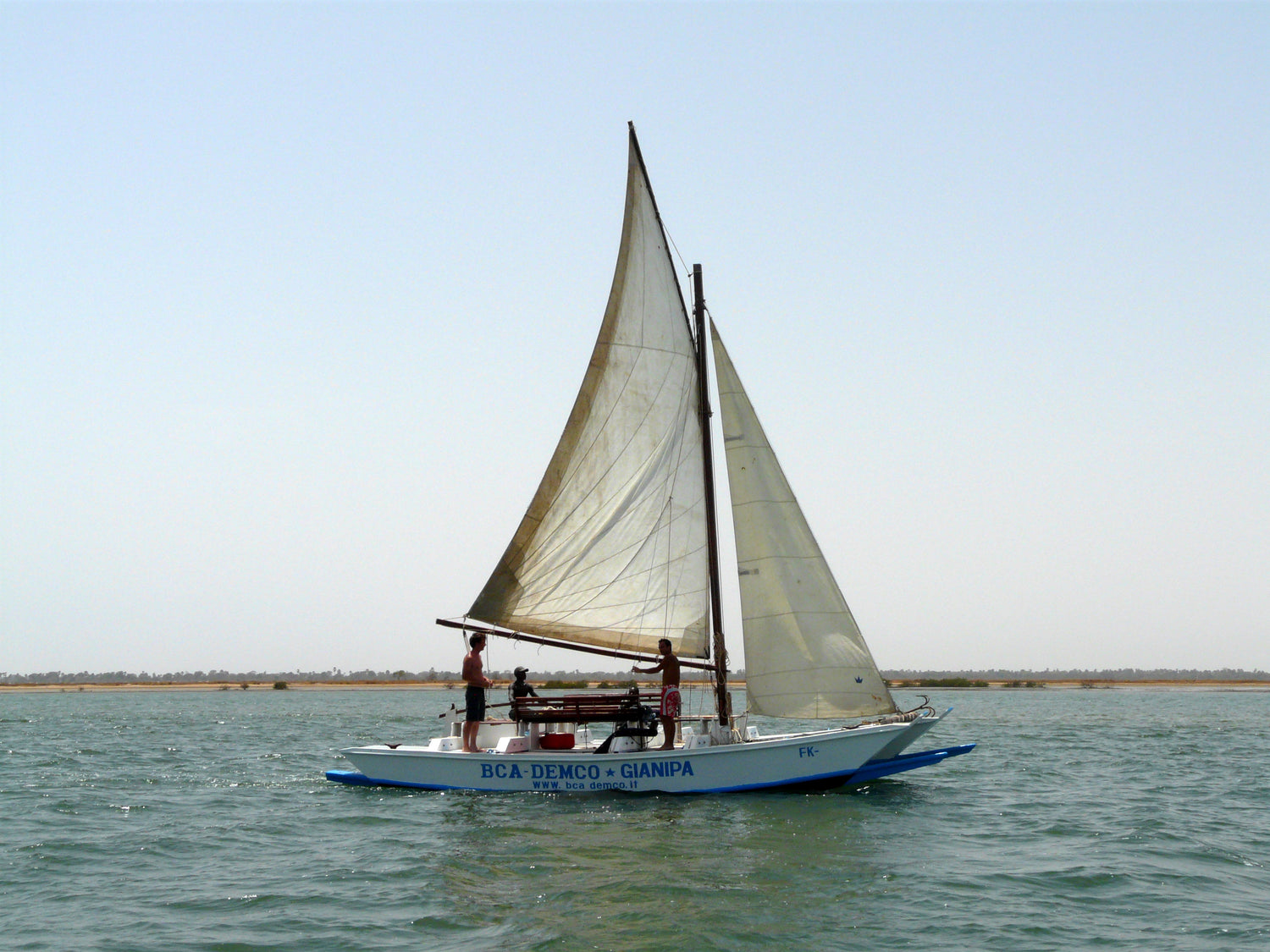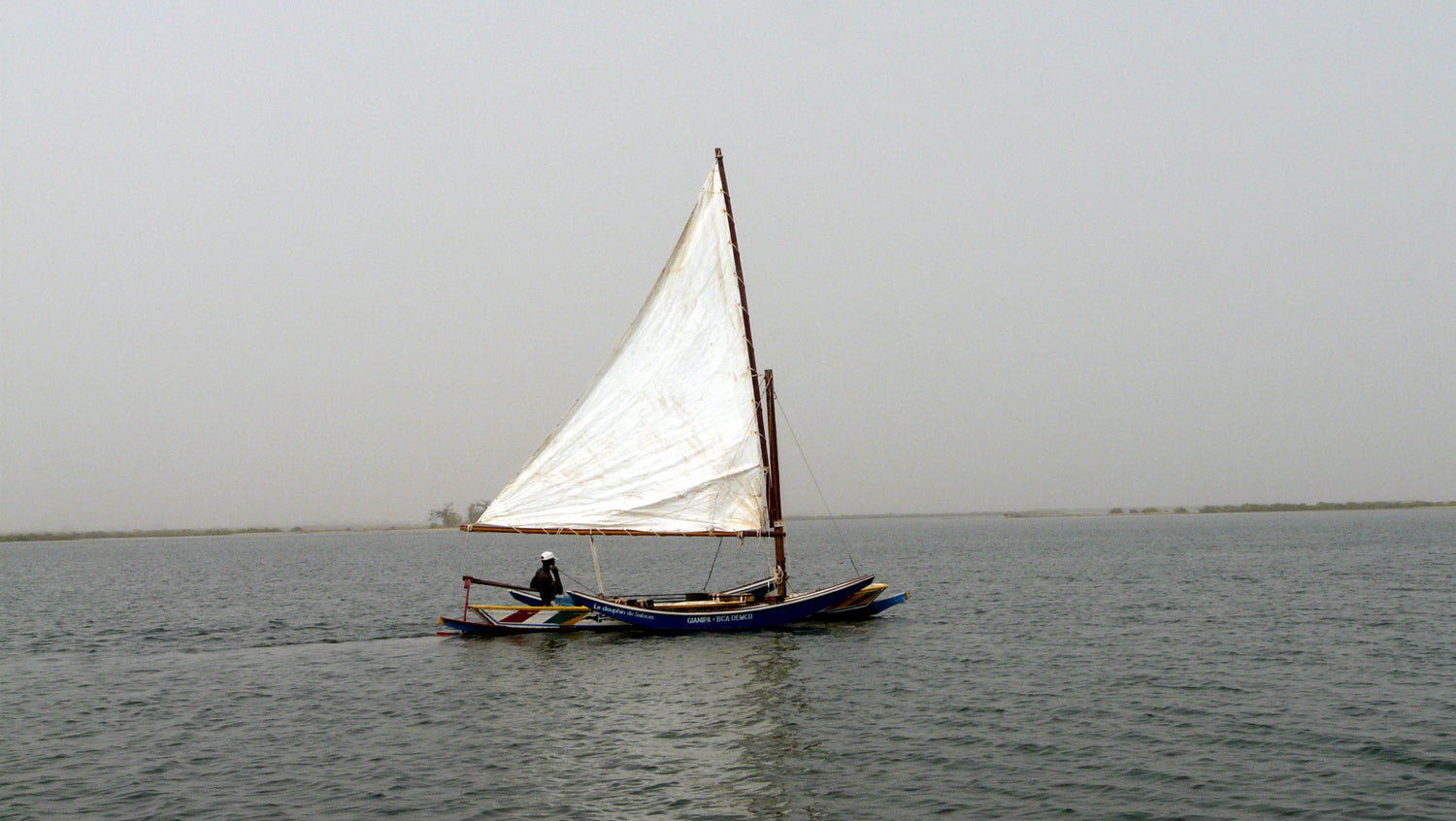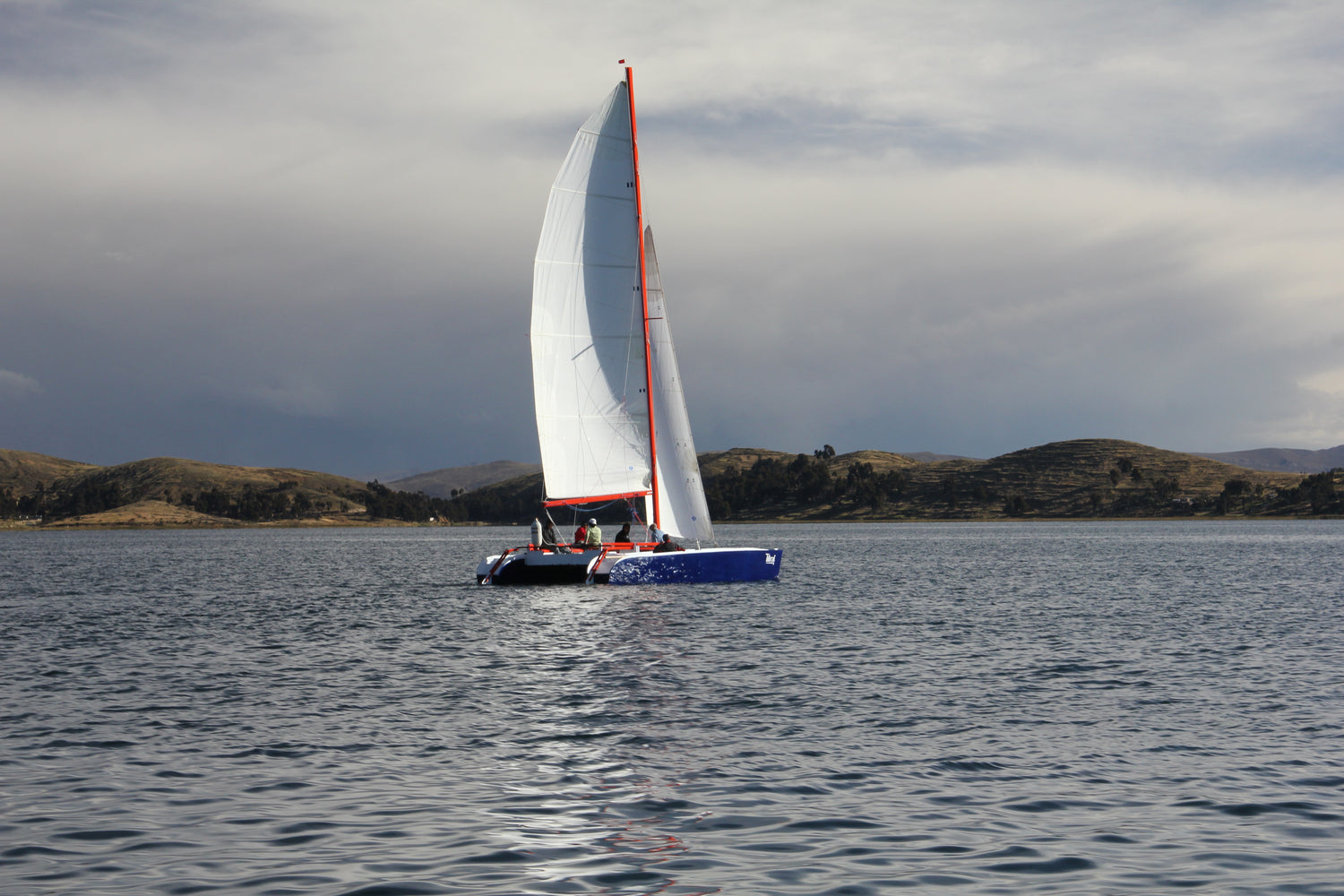Progetti per paesi in via di sviluppo (PVS)
AFRICA AND LATIN AMERICA
-
Since 2009, BCA-Demco has started activities in developing countries, collaborating on projects that also have, more or less explicitly, humanitarian and social goals that we fully share. We report on it in the pages dedicated to Senegal and Bolivia , the two countries in which we have operated so far. Regarding what we do in Senegal, more detailed information can be found on the website www.voile-senegal.com and on the Facebook page www.facebook.com/senevoile.sene/ .
-
Beyond their human aspects, these activities were also rewarding and interesting from a professional point of view, confronting us with realities and problems that were very different from those that a nautical designer is used to considering in a European context. For this reason, we would like to not limit our activity to these experiences and would also gladly consider other initiatives in the nautical field in developing countries. The contribution of nautical know-how is precious for developing countries and by finding the right forms of collaboration a lot can be done in this field. This concerns both pleasure and work boats. As regards the former, pleasure boating is in fact almost non-existent in many developing countries, despite there often being ideal conditions for practicing it and navigation areas yet to be discovered. Spreading boating is an effective way for these countries to develop their tourism potential and derive economic benefit from it. As for work boats, in many African countries, fishing, practiced with systems and boats that are still artisanal, if not primitive, remains one of the main resources. If traditional boats (for example the beautiful Senegalese pirogues) have acquired extraordinary efficiency over a slow and very long evolution and are cost-effective with which more modern boats cannot compete, much remains to be done in terms of navigation safety , solidity and seaworthiness. The theoretical and technological knowledge of a nautical designer who wishes to dedicate himself to these topics, having in-depth and direct knowledge of the environment and local boundary conditions, can be invaluable. BCA-Demco has been very interested in problems related to development and cooperation in the nautical field and the experience in Senegal has allowed us to verify our ideas in this regard in the field. The results achieved, albeit with lights and shadows, and the satisfaction we have gained from them encourage us to continue on this path.
Senegal
-
BCA means, as our long-standing customers well know, Boats With Soul, but the acronym also lends itself well to an initiative started in Senegal in 2009 and which, although now closed for BCA-Demco, has continued with management and entirely Senegalese staff. The initial project involved designing and building, either directly or in collaboration with companies already operating locally, boats mainly intended for the local market. Boats With Africa, therefore, also to underline the fact that we did not intend to develop European boats to export to developing countries, but to create boats specifically conceived and studied for the local context which, as you can imagine, is very different from the European.
-
Technical assistance at the GIANIPA construction site
We started our first experience in the nautical field in Senegal in May 2009, in collaboration with one of our Senegalese subsidiaries, GIANIPA , to which we provided design and technical assistance (also on site) for the construction of three boats intended to be rented to tourists for excursions and short cruises within a large river delta, so rich in fauna and flora that it has been declared a natural reserve. The area, called Sine Saloum, is among the most evocative of Senegal and among the most suitable destinations for "sustainable" or "solidarity" tourism. The boats we initially designed for this initiative are sailing multihulls, a 9 m catamaran and an 8 m trimaran. The choice of the multihull is completely innovative compared to the Senegalese (and generally African) tradition, where sailing, once practiced only at downwind speeds with rudimentary and small stumpy sails rigged on narrow and unstable canoes, has now practically disappeared .

Sirene du Saloum
For the catamaran, called La Sirène du Saloum, we took inspiration from the traditional, beautiful and extraordinarily functional local pirogues for the design of the hulls. The technique adopted is that of stitch and paste, and this is also new for Senegal, where boats are still built with semi-primitive systems, not without effectiveness and extremely economical but which leave much to be desired from the point of view of resistance, durability and water impermeability of the hulls obtained. Naturally the pure and simple adoption of modern systems
it is not enough on its own to solve all the problems and our first direct experience of construction in Africa was enlightening both to understand the development potential of the idea and to understand its limits and problems.

Fisherman 570
Strengthened by this experience and convinced of the validity of the idea, we repeated the initiative in 2010 by proposing a different type of boat, a very solid, simple 5.70 m Fisherman, suitable for engines of limited power (40 HP), usable also in the river delta for fishing trips or quick excursions. We have built two examples, currently on the Sine Saloum delta.
Both the Fisherman and the catamaran have been included in the plans of our catalogue.
While the first seems to us to be a feasible boat and suitable for use anywhere, the catamaran already appears to be "ethnic" in appearance and it would be curious to see some examples sailing on Lake Como or in Liguria.
However, we point it out to readers both because someone could always decide to build one for the sake of the exotic and unusual, and to point out that there is the possibility of renting it for fascinating navigations on the Sine Saloum delta in Senegal.

SENEVOILE
The last boat built in Senegal based on our project and with technical assistance from us was, in 2013, the Maimouna boat, a 6.50 m collective dinghy designed for the needs of the sailing school.
Thanks to the experience accumulated in these projects, the Senegalese team that worked with us has developed good executive skills and growing autonomy, so that our direct on-site assistance has gradually decreased and practically ceased in 2015, while the shipyard , which in the meantime had also started a general carpentry business, passed to entirely Senegalese management. In recent years his activity in the nautical field has mainly consisted of restoration work on used fiberglass motor boats.
and in marine plywood sent from Italy and in the continuous maintenance of the numerous dinghies and boats destined for the activity of the SENEVOILE sailing school.
For more information you can visit the website: www.voile-senegal.com
-
2013 – SENEVOILE project: a Senegalese team at the Olympics
Albeit indirectly, BCA-Demco Kit was involved in a social project started in Senegal by Paolo Lodigiani in the last months of 2012. The project, called SENEVOILE, entered the operational phase in the first months of 2013 and is today still in full swing, carried out by the Senegalese association SENEVOILE.
The project's primary aim was to spread pleasure boating and sailing in the country. In short, it was about starting a school that would offer Senegalese children and young people the opportunity to familiarize themselves with nautical sports and learn sailing. At the time, recreational sailing in Senegal was practiced almost exclusively by tourists and European residents, while traditional fishing on beautiful and slender brightly decorated pirogues has always been widespread, few of which still hoist picturesque square sails from time to time . Since we must always have ambitious objectives, we had set the participation of a Senegalese team in the Olympic sailing games as the end point of our students' training. Two Olympics have already passed since we started (Rio de Janeiro and Tokyo), a third (Paris) is imminent and the objective of Senegalese participation is still quite far from being achieved. The good news is that Senegal has been chosen, the first country in sub-Saharan Africa, to host the 2026 Youth Olympic Games, which also include the disciplines of sailing and kite surfing, and the SENEVOILE school will make every effort to ensure that some of its student is the representative of the country in this important event. Beyond these competitive objectives, what gratifies us most is the fact that for many years the school has offered numerous Senegalese children, teenagers and young people the opportunity to practice sailing, which is not just a sport or a fun pastime but it also has a strong educational content, accustoming you to commitment, discipline, sporting competition and team work. The school also offered a job opportunity and professional training to some of our students who over time became instructors. At the moment SENEVOILE is practically the only reality in the country where a boy has the opportunity to practice sailing but we hope that the example will be followed by others and in this we also count on the support of the FSV (Fédération Sénégalaise de la Voile).
Over these years the contribution we have made, beyond financial support and organizational assistance, has been above all technical, with the sending of volunteer instructors from Italy for a few months, and the supply of boats, equipment , teaching materials and accessories. Some of the school's boats were built in Senegal with assistance from BCA-Demco, most of which are dinghies sent from Italy or, in rare cases, purchased locally. In various expeditions, around thirty used dinghies (mainly Optimist, Laser, 420 and 470) were sent. Part of these boats were donated to us by Italian people or associations who wanted to contribute to the initiative. In particular, we received both concrete support (with the offer of some dinghies) and promotional support from the Italian Naval League – Milan Section. The "fleet" of the sailing school is still large from a numerical point of view but the difficult environmental conditions, in addition to the Senegalese's lack of propensity for maintenance, mean that most of the boats are now in conditions bordering on use.
Like the activity of the shipyard, that of the school has become increasingly "Senegalese" over time and it is right that this is the case and that over time it becomes more and more autonomous. It is a great satisfaction for us that, more than ten years after we started it, the school is functioning and above all that it has been welcomed with such enthusiasm and participation in the village in which it is based. This is Ndangane, in the Sine Saloum region, which stands on the edge of a large lagoon (the delta of a dried river invaded by ocean waters) with sheltered waters and ideal conditions for sailing. The village is poor and offers practically nothing in the way of leisure opportunities. The sailing school has become one of the most popular attractions among kids and new students show up every year. Some, who joined as children, stayed and became instructors at the school, as well as friends. If from a competitive point of view there is still work to be done to improve results from a human and social point of view, we can only be satisfied with what has been achieved. -
Anyone who would like further information on the project do not hesitate to contact us and it seems needless to say that any form of collaboration is appreciated. There are many ways to help the project, from sponsorships to the supply of old boats, equipment and sailing accessories. If any sailor volunteers to do some on-site training, they are welcome and we are sure that they will get a useful and fun experience from it. The support, even just as moral support, from Italian institutions is equally welcome. What we offer in return to those who help us is a bit of publicity but we think that the gratitude of the Senegalese who will benefit from their availability is worth much more.
More detailed information on the project can be found on the Facebook pagehttps://www.facebook.com/senevoile.sene/
Bolivia
-
Lake Titicaca
The Senegalese initiative has allowed us to develop valuable experience on the possibility of collaborating in the nautical sector with developing countries. It is precisely following this experience that we were asked to collaborate on a project with similar characteristics set in Bolivia, more precisely on Lake Titicaca, the highest lake in the world. It is a basin of considerable size (22 times larger than Lake Garda) which extends between Bolivia and Peru at 3800 m above sea level. The request came to us from a mission that operates on the Bolivian side of the lake and which has long since started a craft and wooden construction activity with the local populations.
-
The head of the mission, the enthusiastic and dynamic Father Leonardo Giannelli, thought that a large-scale project, such as the construction of one or more boats, not only had great educational value, but also allowed one to start a tourism business nautical with a certain economic return. We more than willingly joined the initiative and we confess that what encouraged us were not only its human and social contents but also the curiosity to design a boat destined to sail in an absolutely unique environment: a real sea wrapped in an atmosphere magical and rarefied (not just metaphorically, since the air has a density more than 30% lower than that at sea level). We therefore designed TITICAT, a modern 8.5 m sailing catamaran, designed for the transport of tourists and for strip planking construction.

TITICAT
Between 2011 and 2012, in just 9 months, Father Leonardo Giannelli's project came to fruition and the first example of the series, the TITICAT 1°, was built in the construction site of the Huata mission. by valid local staff, with occasional on-site visits by Giuseppe Sfondrini, who promoted and coordinated the project from Italy, and by us.

The experience was very positive and we were happy to get involved even a little beyond our initial role as simple designers. There are many reasons, starting from the contagious enthusiasm and indomitable will of father Leonardo Giannelli, capable of gathering and motivating various contributions around the project from qualified professionals in the sector (just think that the sails were made by Guido Cavallazzi , the magician of Luna Rossa's sails), suppliers and various friends, who also contributed to the construction on site. For those who, like the writer, had the opportunity to participate directly in the construction, the possibility of sharing, even for a few days, the work of the friendly, motivated and efficient team of Bolivian builders, was an unforgettable experience, human even before How professional. The magical charm of the place, an enormous almost desert lake at 3850 m above sea level, surrounded by snow-capped mountains exceeding 6000 m, did the rest. The culmination of the work carried out was, in March 2012, the solemn and picturesque launching ceremony, solemnized by the presence of the local authorities and enlivened by folk songs and dances. You can see an extensive extract of it on YouTube.

This first realization had a very positive outcome, thanks above all to the organizational skills, resourcefulness and enthusiasm that Father Leonardo Giannelli and all his collaborators have shown in managing to create and promote a nautical and tourist activity on Lake Titicaca. After the first Titicat, a second identical one was built. In this case the Bolivian workers, trained with the construction of the first catamaran, did everything without any need for assistance from us and with an excellent result. Since then the two twin catamarans have been sailing on the lake carrying tourists around with crews of Bolivian boys who we are proud to have helped to train. You can see some images on the tour organizers' Facebook page: https://www.facebook.com/titicattours/ .
In more recent years, the two sailing catamarans have been joined by a motor catamaran which is used to take tourists from the Huata base, where the mission is based, to the island of Sol, one of the major tourist attractions on the Bolivian part of the lake. Titicaca. Also in this case, BCA-Demco provided the design services while the construction was carried out entirely by Bolivian personnel.
-
Titicat
As can be seen from the photographs, the TITICAT is a catamaran with modern lines and capable of good performance. The sail area may seem a little too generous for a vessel intended for taking tourists out and therefore for very peaceful use. However, you must take into account the fact that due to the lower density of the air due to the altitude of Lake Titicaca, the pressure exerted by the wind on the sails is proportionally smaller. On the basis of this project, we have studied a version of the catamaran intended for coastal cruising included in our catalogue, which includes some modifications depending on both the different conditions of use and the different destination.